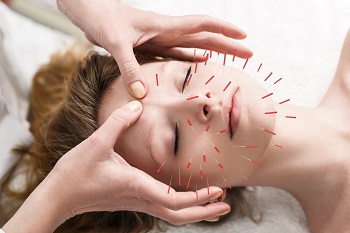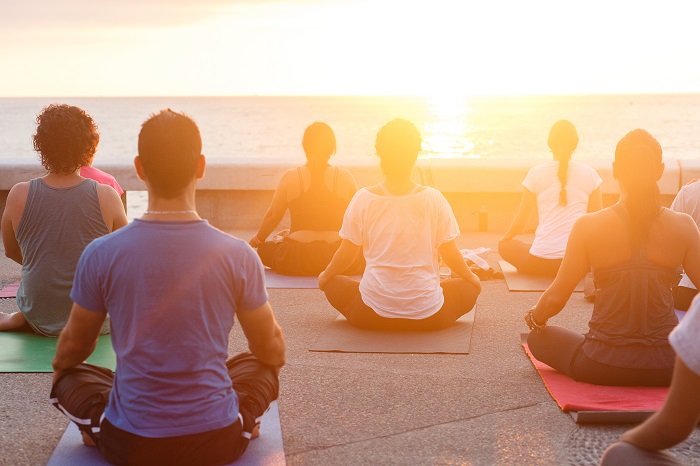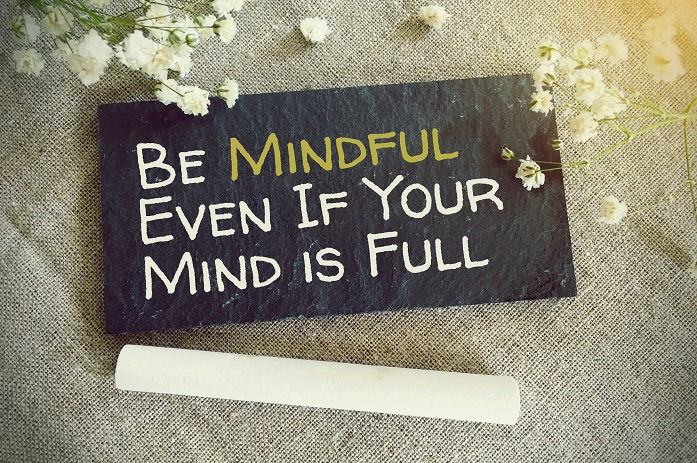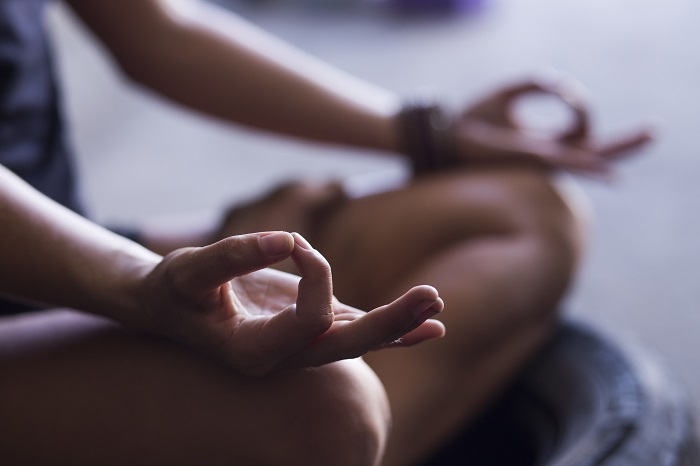PPZ3C
Unit 3: Healthy Communities
Activity 1: Did I Really Choose to Buy That?
There are many different alternative health care services in Canada such as acupuncture, osteopathy, homeopathy, naturopathy, chiropractic, reflexology and massage therapy. In addition, individuals can take advantage of therapies such as vitamins and minerals, herbal products, homeopathic medicines and other natural health products to improve their health.
 Did You Know?
Did You Know?
More than 70% of Canadians regularly use complementary and alternative healthcare therapies.
You can read more about the use of complementary and alternative health care at the Public Health Agency of Canada.
Complementary and alternative medicines are made up of many different therapies from various historical and cultural backgrounds. These therapies often require that you take an active part in your own treatment with lifestyle changes such as eating well, exercising, and managing stress through relaxation or meditation.
| Complementary and Alternative Medicine | Conventional Medicine |
|---|---|
|
|
Both styles of treatment emphasise the quality of the relationship between you and the practitioner. A good relationship is important for a successful outcome. Often, both conventional and complementary and alternative medicine approaches are used – this is called integrated medicine. Adapted from Arthritis Research UK. |
|
Canadians often consider alternative services or therapies outside the traditional Western approach or as complementary treatment to help us when we are ill. These complementary treatments might include reflexology, yoga, massage, acupuncture or herbal medicines to name a few.
Having these treatments along with traditional western treatments may help you feel better and cope better with your illness.
People may also consider complementary and alternative medical products and services when they have long-lasting problems that conventional medicine hasn't completely cured.
At other times, these alternative treatments become backups to traditional approaches that have side effects which are not managed well. For example, a person who is undergoing chemotherapy - which can be painful - might consider yoga and massage therapy to manage discomfort.
For a side effect like nausea, ginger is sometimes recommended. Complementary and alternative medical therapies that promote wellness are also often used by people who are healthy, both to prevent illness, and to help them live a healthier lifestyle.
There are six steps that all practitioners who work in alternative health care must consider if they are to follow the guiding principles of care:
- First, Do No Harm
- The Healing Power of Nature
- Identify and Treat the Causes
- Doctor as Teacher
- Treat the Whole Person
- Prevention
You can read more about each of these at the GREATIST blog.
These factors all work together to offer an alternative to traditional Western medicine. These alternative services and therapies focus on the entire person, not just the immediate health issue.
There are many different complementary and alternative therapies that you can consider as a way to stay healthy, use along with conventional Western medicine, or improve your quality of life. Here's is a short list of options. Click on each door to learn about the different services.
 Assignment: Becoming Service Savvy About Complementary and Alternative Health Care Options
Assignment: Becoming Service Savvy About Complementary and Alternative Health Care Options
Time to gather and organize...
- View the holistic practices here and consider the variety of alternative practices available to use as complementary or alternatives to traditional Western treatments.
- Choose one of the health care services from the match activity or from the holistic practices list that seems interesting to you and find out a little bit more about it.
- For your chosen health care services, record each of the following:
- Name of Health Care Service;
- Two images that represent or explain the service;
- An explanation of how the service helps people;
- A list and explanation of some of the advantages of using this service;
- A list and explanation of some of the disadvantages of using this service;
- An explanation of whether or not you would use this service or not;
- A list of interesting facts about the service;
- An explanation of whether or not this service is offered in your community and if not, an explanation of where the closest location is to you.

You have just learned that there are many different alternative services therapies, most of which are available in Canada. One service that is often used in sports medicine clinics is acupuncture. Acupuncture is also used to help with chronic pain and inflammation; it is also a treatment for migraines and depression.
This treatment consists of penetrating the skin with thin needles inserted by a practitioner or electrical stimulation, and it’s currently used by many Canadians each year.
Despite its popularity, there is controversy over acupuncture’s effectiveness. This is a practice which is always subject to studies evaluating its effectiveness.
The effectiveness of these complementary and alternative therapies is often a subject of much debate. Do these treatments succeed because they are effective - or, do they succeed because patients believe so strongly in their effectiveness? For instance, a "placebo effect" can occur when people are so hopeful that a treatment will work that they react in a positive manner to a treatment. Placebos, or "fake drugs or treatments" are used in clinical studies. The placebo effect happens when patients’ positive response is not due to the effectiveness of the actual drug but a strong belief in what they believe to be the real drug.
 Assignment: Is This Really Going to Work?
Assignment: Is This Really Going to Work?
1. Watch one of the following two videos about alternative medicine and the placebo effect:
2. Consider all the alternative services and therapies you have learned about and choose one service or therapy you would like to investigate to determine the evidence of its effectiveness.
3. Your role as an investigative journalist is to find information to contribute to the debate about the effectiveness of your chosen alternative medical practice, medicine, product, or procedure.
4. Find and use other sources to gather information about the effectiveness of your alternative medical practice, medicine, product, or procedure to understand why some people feel this treatment is effective.
5. Use this checklist to make sure that you have organized and gathered sufficient information; it will also help you construct your audio/video file.
Checklist
As you gather your information for analysis, use the following checklist to help guide you in your research:
- I have enough information to describe my chosen alternative medical practice, medicine, product, or procedure.
- I have found enough information to come to a conclusion.
- I have all the information I need to draw my conclusion. (If not, what further information do I need to gather?)
- The information gathered confirms what I know or challenges my ideas about my topic.
- I have analysed my information to see the relationships in the evidence I have found to draw my conclusions.
- I have checked for bias in my sources.
Once you have collected all your information, you will need to combine and arrange your information in a clear way to make a logical conclusion.
- I have eliminated information that isn’t important.
- I have determined the implications of the evidence I have collected and made my conclusions.
- I have organized my information in a logical way to state my position.
- I have determined how I will best present my information in a video/audio file.
6. Create a 1-3 minute newscast video or radio broadcast audio file presenting your conclusions based on the evidence you have gathered.
Mindfulness
Mindfulness is the aware, balanced acceptance of the present experience. It isn’t more complicated than that. It is opening to, or receiving the present moment, pleasant or unpleasant, just as it is, without either clinging to it or rejecting it.
Watch the following video, Why Mindfulness Is a Superpower: An Animation, to learn about the superpower of meditation and mindful living:
?
After you read and watch
Is there anything new you’ve learned that changed your outlook or stance about mindfulness?
Read the short article and watch the video about Dan Harris and his claims that mindfulness and meditation could be the next health revolution.
Harris was the anchor of ABC News, Nightline, and the Weekend Edition of Good Morning America.
He recently wrote a memoir about his public breakdown and journey to mindfulness entitled, 10% Happier.
After experiencing a panic attack while filming a new episode, he started to read more about how mindfulness could rewire his brain to help with his on-air breakdowns.
Dan Harris goes on to explain how to meditate.
Here are the first three things for you to consider:
- Sit with your back straight and your eyes closed.
- Notice your breath.
- Your mind will wander. Keep starting over!
 Assignment: Mindfulness Practice
Assignment: Mindfulness Practice
All of the benefits of meditation and mindfulness lead to enjoying your life, and living in the moment.
- Find an app or a website online that focuses on having you sit still for at least five minutes. Here is the Dan Harris Meditation for beginners video.
- Once you find a site, find a quiet area; perhaps you can use headphones to allow you to concentrate better. Try to follow the advice listed above. Can you be mindful for five minutes?
- Choose one of the following formats to reflect on this experience once you have completed it: a video reflection, a blog, a mind map, or a journal.
- Use the following questions to guide your reflection:
- Did you enjoy slowing your mind down? Why or why not?
- Is this something you’ve tried before? If yes, compare this to your previous experience. If no, why not?
- Would you consider trying it again, perhaps for a longer time? Explain why or why not.
- How did this meditation affect your state of mind and your body?
- Why do you think some people practice this on a regular basis? How might they benefit from doing so?
Video Games and Activity
Think about when you were a child. Did you save money to buy a new skateboard or video game? Did you get caught up in the virtual sports video craze, and end up golfing or playing tennis in front of your television?
Read about these two different viewpoints about the benefits of video-based exercise programs: What Are the Health Benefits of Wii and Wii Fit? and Wii Fit – Or Just A Wee Bit?
Several studies have tried to prove that these exercise video games are useful products in improving the overall health of the children and young adults who play them. In theory, they seem to be a great idea, as children need to stand up to play them. Often the argument, "some exercise is better than none," is used. Physical therapists also love these games, as they offer a safe, indoor environment for clients to rehabilitate. On the reverse side of the argument, Canadian standards recommend an accumulation of at least 150 minutes of moderate- to vigorous-intensity aerobic physical activity per week, in bouts of 10 minutes or more.
Like the choice about buying video games to support your personal wellness and physical activity requirements, you make personal choices every day about the health services you access and the health products you buy. Have you ever stopped to think about what factors influence you the most when making these choices?
 Assignment: What are Your Biggest Influences and Why?
Assignment: What are Your Biggest Influences and Why?
Rank the following factors from least to greatest influence in terms of how much each factor influences the health products you choose to buy and/or services you choose to use.
- finances
- peers
- culture
- media
- government policies
- availability/accessibility of health services
- environmental impact
Write a paragraph assessing which three factors have the greatest influence on what health products and services you use most. Explain why you use them.
Consider the STUFF you buy in pursuit of a healthier and happier life. We get exercise equipment that sits unused in a basement or garage. We decide to try a new sport and often acquire the equipment to participate in this sport, even before we know we like it! We buy a new health product and then don’t take the time to use it as we should to get the results that are promised. There are so many influences on our choice to purchase new "stuff."
Do we need so much stuff?
This activity also focused on complementary and alternative services and therapies and why we access them. We have also explored the factors that influence our personal choices about accessing health care services, therapies, and products.
In this activity, we discovered a few techniques, like mindfulness and meditation, to help us deal with everyday stressors. We talked about supplementing traditional Western treatments with complementary and alternative treatments when needed. However, what if you are not lacking, but rather, feel like you are overwhelmed by the stuff of everyday living?
One of the recent movements towards pursuing happiness is to have less. Less 'stuff' in your home, less 'busyness' in your daily life, and less stress as a result of this move to a simpler lifestyle.
 Assignment: Do You Need to Consider Doing with Less Stuff?
Assignment: Do You Need to Consider Doing with Less Stuff?
View the following video entitled "Less Stuff, More Happiness" in order to learn about one person’s experiment with less living space:
- Think about your own life and how you envision it. Would you adopt this philosophy of "less is more" in your life? Why or why not?
- What is one thing you might do to reduce the "stuff" in your life to feel less stressed and have greater health? Why would you do this one thing? Why would doing this one thing reduce your stress? Consider physical "stuff," as well as emotional "stuff," such as stress or worrying too much.
The following video shows his actual apartment transformation:


